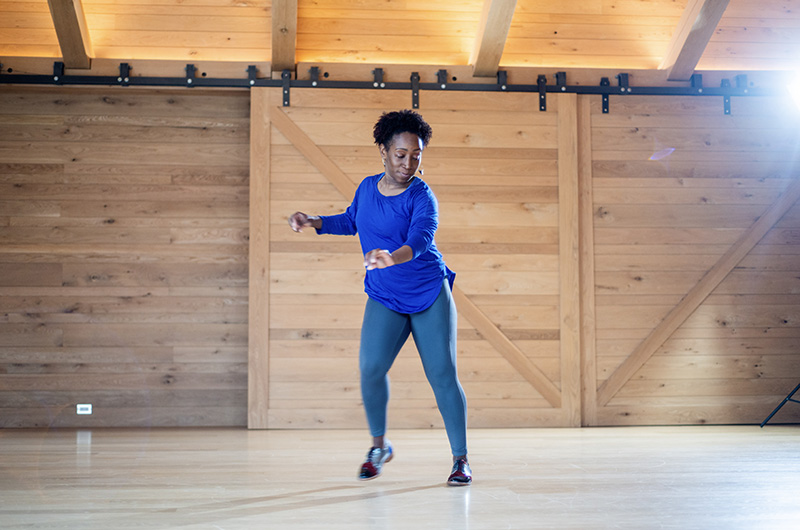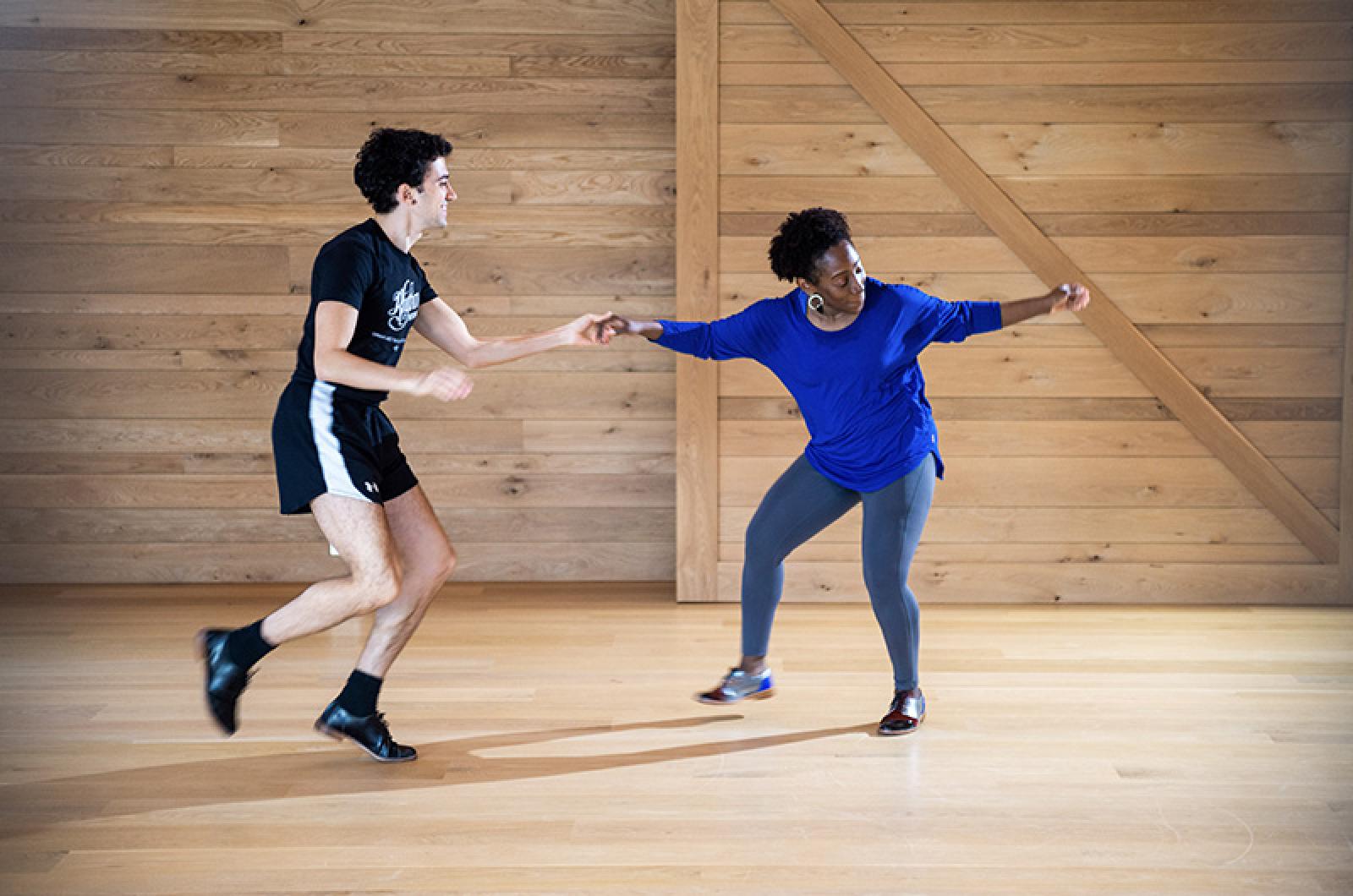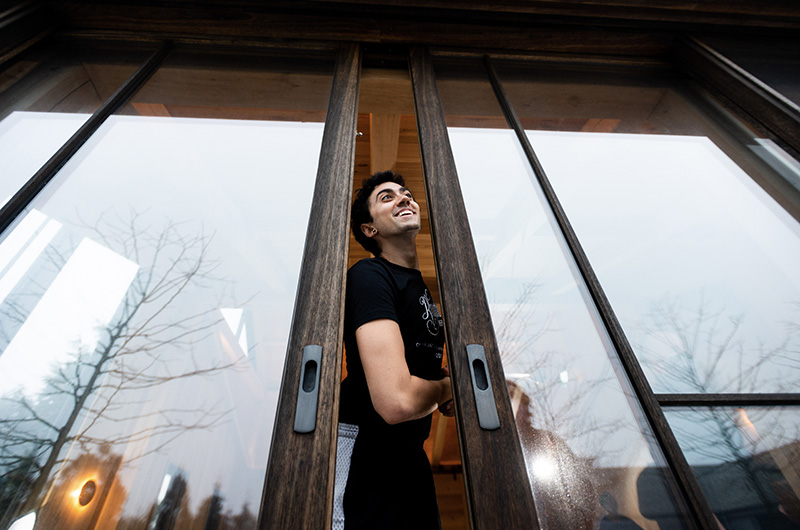New York based dancers LaTasha Barnes and Caleb Teicher had not danced together since before the Covid-19 pandemic began in early 2020. But this year, a series of “bubble residencies” — most recently at Slough Farm in Edgartown, sponsored by the Yard — have given the two a chance to get close again.
“The kind of dancing we do is very germy,” Caleb said during a virtual show on Saturday evening, webcast live from Slough Farm in Katama.
The duo had been in residency on the Vineyard for the past week, exploring new creative possibilities and the Island in a way that has not been possible this year. On Saturday they offered a virtual dance class in the afternoon and a performance in the evening.
One of their signature styles is the Lindy Hop, a swing-era social dance that, like jazz at its best, celebrates both form and improvisation — often at athletic tempos. Opening the show with a buoyant Lindy Hop to Ella Fitzgerald’s 1961 recording of Jersey Bounce, the dancers had to catch their breath as they shared a few thoughts with the audience.

Caleb said the Yard residency, unlike similar programs elsewhere, does not require artists to present a significant work in progress. The dancers have been using their time at Slough Farm to practice together and trade skills, and they’ve also been regulars at nearby South Beach.
“This is my first time on the Island and it’s quite magical,” LaTasha said. “The ocean has been very generative for me, and watching it ebb and flow... really unlocked me in a very powerful way. I did not expect it.”
LatTasha evoked that tidal pull in a mesmerizing solo to I Will Never Know by Detroit-based Tall Black Guy with Moonchild, with its trip-hoppy chorus “I’m just gonna flow with it, go with it/Find my rhythm in uncertain waters/Let the changing tide wash over me.”
In the dance, which she called “a meditative work in progress” based in the disco-inspired style called waacking, she was a marvel of fluid, isolated arms and legs, tightly spiraling turns and floor work.
Caleb, who is best known as a tap dancer, delivered a breathtaking solo demonstration of another type of percussive footwork: Appalachian clogging, also known as flatfooting.
“I was really compelled to explore [clogging] this week because I’m in a rural place,” Caleb said. “It also reminds me of farm work. I did a bit of farming on Martha’s Vineyard last summer, on Ghost Island Farm... You get into a groove with physical labor. It feels good, and certainly you produce something. In the farming context you produce food. In this context I produce sound.”
During a question and answer period with the audience, both dancers emphasized the value of residencies like the ones sponsored by the Yard, which support artists making new work.
“It just takes time and study and experience to feel comfortable creating... and then it takes a certain amount of plain experimentation,” Caleb said.
“Artists desperately need this untethered space,” LaTasha said. “Acknowledging that dancers, as humans, are valid beings worthy of being invested in... is crucial.”








Comments
Comment policy »